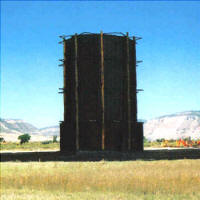|
|
Two exciting scientific developments may solve major problems facing today's world. In Australia, a Sydney company plans to produce drinking water cheaply by harnessing the power of ocean waves, while in the United States an experimental tower has been built in Utah, to produce miniature tornadoes capable of generating electricity. The privately owned Australian company, Energetech, originally set out to produce cheap electricity from wave power. Then someone had a brainwave: why not use wave-powered electricity to desalinate some of that sea water? So they teamed up with another privately owned Australian company, H2AU, which was promoting a desalination process that was hampered by the high cost of electricity. The perfect fit! "Energetech is a renewable energy technology development and industry advisory company" it says on its home page. "The company has developed a new and commercially efficient system for extracting energy from ocean waves and converting it to electricity or desalinated water. The Energetech technology now makes it possible for wave energy to provide a cheap, sustainable source of power or water to grid-connected and remote users. "Since the Kyoto Conference on Global Warming the Energetech wave energy plant at Port Kembla would have saved 9295.2 tonnes of CO2 from the atmosphere." In the Financial Times, Rory McGuire reported that the prototype was being tested offshore at Port Kembla, south of Sydney, and indications were that it would deliver electricity at a price competitive with coal-fired power. In full-scale production, each unit could cost as little as $1.6 million and could at times deliver power for as little as five cents a kilowatt-hour. Energetech's website says:
In September 2004, Energetech America LLC, the Australian company's Connecticut subsidiary, announced plans for a "first of its kind" wave energy project in the United States. Planned for an area more than a mile off the southern coast of Rhode Island, GreenWave Rhode Island is an estimated $3.5 million project to convert ocean waves into clean electricity. "Harnessing ocean energy has the potential to produce a virtually limitless supply of pollution-free electricity to help meet U.S. and the world’s growing energy needs," said Dr. Tom Denniss, executive director and founder of Energetech Australia Pty. Ltd. The pilot project, planned to operate for three years, has received $1 million in planning and development funds from the renewable energy funds of three New England states (Rhode Island, Massachusetts and Connecticut).
Prototype vortex tower Let's now move to Sarnia, Ontario, Canada, where petroleum engineer Louis Michaud has invented an "atmospheric vortex engine" that he believes could be used to capture waste heat from power plants and convert it into more electricity. In an interesting story in Discovery News, Tracy Staedter reports: "Two hundred megawatts would supply the electricity needs of a city of 100,000 people with 25,000 homes," said Michaud, whose theories were tested this summer in Utah at an experimental tower owned and operated by colleague and computer engineer Tom Fletcher. The vortex engine is based on atmospheric convection — that is, when the sun heats the ground, hot, moist air rises and expands. In the process of cooling and condensing into rain, it gives off energy, then sinks back to earth, where the sun warms it once again. In nature, this cycle of rising and sinking air can produce tornadoes and hurricanes. Michaud realized if he could tap into the strong updraft created in these cyclones, he could potentially generate emission-free electricity. Michaud's website contains many interesting photos, sketches and details of his work. One picture is captioned: This experimental vortex tower located in Utah, USA is owned and operated by Atmospheric Vortex Tower, LLC (Tom Fletcher, Principal). During initial testing in August 2005, the tower was successfully used to generate large convective vortices and fire whirls. The world will be a better place if both these bold attempts to make use of immense natural forces succeed, giving us cheaper desalinated water and pollution-free electricity. More power to the inventors!
| ||||||||||||




